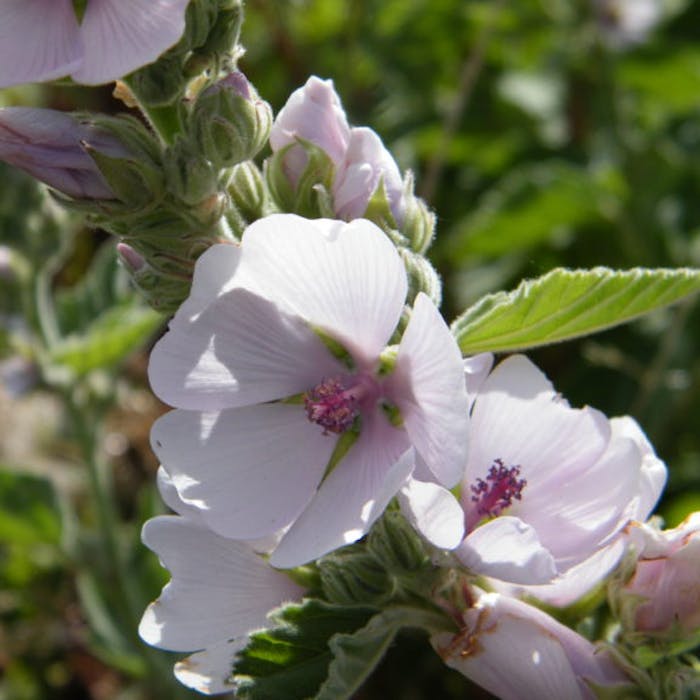
Marsh mallow - good to look at as well as taste
The Marsh Mallow is a British native perennial plant with pale pink flowers, becoming rare in this country. It prefers damp spots, and even waterlogged soil. And, yes, its history is indeed connected to the squidgy sugary confectionery.
Found in Europe, Western Asia and North Africa, the Marsh Mallow is a tall plant with soft, velvety leaves (on both sides), which have a serrated edge and are round/oval in shape. It blooms with many large pale flowers in August/September, on erect stems that die down in winter. Its close relations are the familiar Hollyhock and Hibiscus.
The plant is happy growing in moist to waterlogged ground, and is found on brackish soils such as dykes, banks, drier salt-marshes and grassland by the sea. It has become scarcer in the UK due to the draining of wetlands over the centuries. It is most often found in the coastal areas of the south and west of England and Wales.
All parts of the plant are edible. The young tops and flowers can be served in salads. The roots were used to make the original marshmallow sweets. They are very thick and long, and can be peeled and boiled, then sautéed with chopped onions in some butter.
The medicinal properties were first recorded in the 9th century BC and the herb was widely used in Greek medicine. Medicinally the plant is very useful for the soothing of coughs and bronchitis, and it also serves as a poultice to combat bacterial infections. Peeled roots were once given to children to chew on as a teething aid.
Marshmallow sweets originated in Egypt, and eventually reached France, where they became internationally known. Commercial production no longer uses the gummy sap from Marsh Mallow roots but gelatin instead.
Further reading
Links to external websites are not maintained by Bite Sized Britain. They are provided to give users access to additional information. Bite Sized Britain is not responsible for the content of these external websites.
